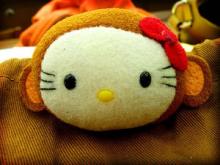Should Cats Be Declawed?
San Francisco Commission of Animal Control and Welfare Chair Sally Stephens says that it’s a barbaric practice used for cosmetic reasons only, so people won’t have to worry about shredded furniture. She also says that the procedure includes cutting off the last bone in a cat’s paw, which can cause long-term pain and even behavioral changes—even if anesthetic is used in the surgery.
De-clawing is already banned in West Hollywood and several European countries, though exceptions can be made if the cat’s health is in danger.
Some changes that a cat may experience following de-clawing can include:
- Refusal to use the litter box due to “phantom pain” from the surgery, which is exacerbated by the litter itself
- Chronic depression
- An increase of biting and aggression to defend itself and feel powerful
- Arthritis
There are also a number of alternatives to de-clawing. One, nail clipping, is very simple to do, and can even be done by a groomer if the owner is uncomfortable doing it himself. We keep scratching posts for our cats, and though they don’t work 100% of the time, they continue to use them more and more often, and I’m hopeful that one day they’ll use the posts all the time and get tired of the carpet.
There are even inventions made specifically by veterinarians to help curb scratching and prevent de-clawing. One, Soft Paws, is a vinyl nail capping that glues right over the claws of cats that comes in a variety of colors or clear. They last for weeks and grow out as the cat’s nails grow. Feliway, a commercial product that copies the scent of a cat’s facial glands, can help sometimes help curb scratching as well.
I know that our vet recommended we declaw one wild cat we had rescued many years ago who attacked our other pets—including a ferret, which it killed—and though we took him up on his advice, our cat was never the same afterwards. Though it was nice to have him calmed down a bit, his spirit never really returned, and he developed a bad habit of peeing (not spraying) all over the apartment. We’ve always regretted the decision, and would never do it to another cat.
What do you think? Should cats be declawed? Should the procedure be completely outlawed—or left to each owner as an individual case-by-case decision?







